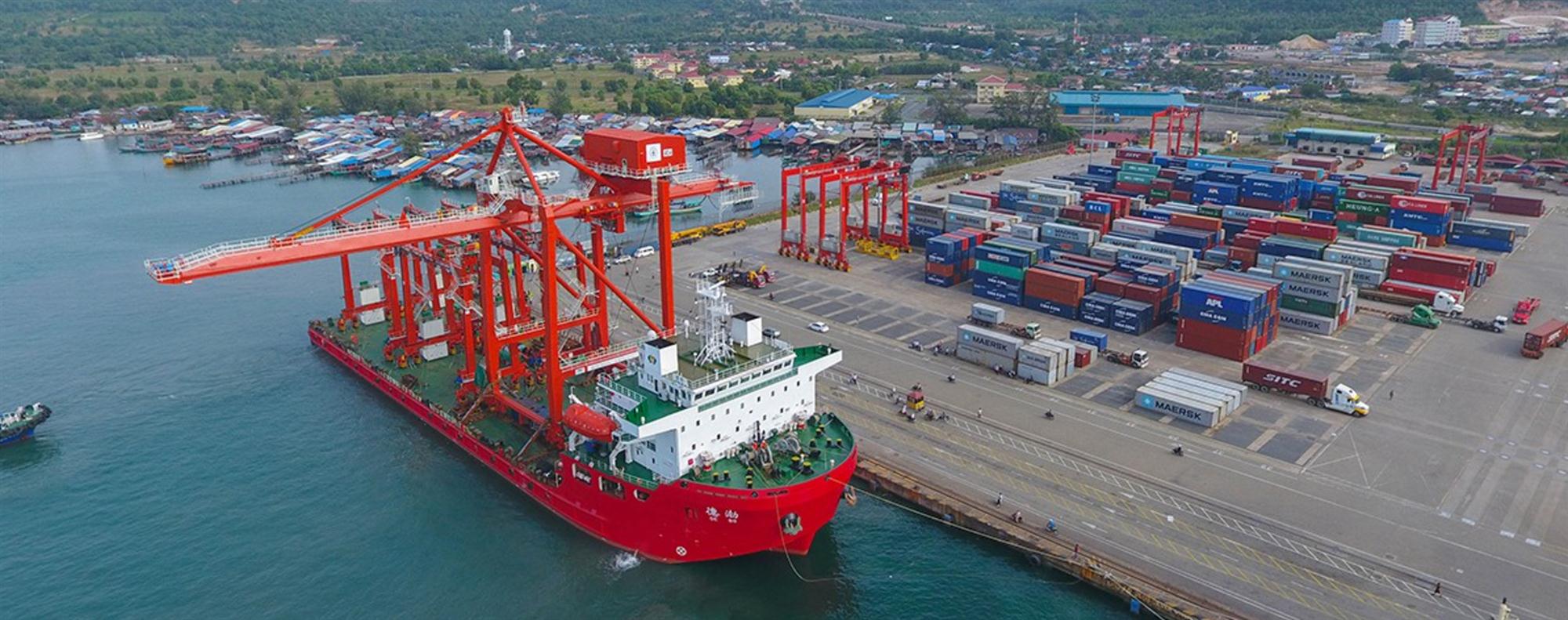Port operators in developing countries can often find expansion opportunities in unexpected places, attendees learned at the ASEAN Ports and Shipping Conference. One of the recurring themes was fine-tuning existing facilities, such as is happening at Cambodia’s Sihanoukville port. Phase VI of the port’s development of a multipurpose terminal is nearing completion, Hen Chann, director of the Internal Audit Department at Sihanoukville, told the conference. “This project is going to be completed by the end of this year,” said Chann, adding that it is about 80% completed.
The 330-metre terminal with a 13.5-metre draft is for bulk and general cargoes and is expected to help Cambodia export agriculture products such as acacia, woodchips and dry tapioca chips. The multipurpose terminal is being built using US$74.2 million of Japanese overseas development agency money.
Longer term, there will be a new container terminal which will have a quay length of 350 metres and is designed with a draft of 14.5 metres. The site will be worked by three container gantry cranes, nine RTG cranes, two 10-ton reach stackers and 16 tractors and trailers. It will be built on reclaimed land.

“This project is going to be constructed from 2019 and completed in 2022,” Chann told the conference. Its throughput is projected at 450,000 TEUs per year, although Chann said it could handle 600,000 TEUs, which would see Sihanoukville moving 1 million TEUs annually.
Of a similar size but in a different situation is the Myanmar Industrial Port (MIP) in Yangon, where the problem is its location, hemmed in as it is by a big, booming city which imposes a 9pm–to-6am curfew. MIP has plans to expand, but the strategy is not so much incremental expansion out into the sea as a seaport would, but a tripartite strategy of riverside expansion, technology upgrades and alliances.
MIP is preparing a 35-acre container yard and container freight station (CFS) and a second container terminal and CFS of 42 acres. There will be an additional four container wharves, each of 200 metres, bringing wharf length to 1,400 metres.
This will give the port a container handling capability of 500,000 TEUs, albeit at a cost of US$200 million. Chris O’Connor, advisor to MIP’s chairman and its chief financial officer, said. A third phase will allow the port to tap the cruise ship market.
These enhancements come on the heels of the recently completed phase one, which increased the port’s working area to 108 acres, the container handling capacity to 200,000 TEUs and expanded the facility from an initial two to the current four berths. Additionally, the new Sule Pagoda Wharves (SPW) were incorporated in August 2016, which saw an existing facility renovated as a general cargo/multipurpose terminal.
Planning and building for growth is the first part of the stool by which MIP will make the most of its situation. “We are going to grow that footprint but, more importantly, optimize that footprint,” said O’Connor.
This will be done by the two other legs of the stool, he said: creating operational efficiency gains with the continued implementation of the technology systems of IFS and Navis, and finding a global strategic partner which may also be an equity investor.
“The staff is good, but once we enable them with technology, we can increase the efficiency,” O’Connor said.
The port is using Enterprise Resource Planning (ERP), software covering accounting, financing and human resources, and NAVIS’s Terminal Operating System, which tracks the box at every step of the way to the extent where the software can “pinpoint and figure out where logjams are,” O’Connor said.
It also relies on MACCS, the Myanmar Automated Customs Clearance System, which was donated by Japan and is integrated with the other two systems. According to O’Connor, the systems will help give stakeholders more data more persistently and, maybe more importantly, will move Myanmar from a paper system to a data system.
The point, though, is not to have the latest tech and a fully trained staff just because you can, he said, but to move more cargo. “The whole goal is to turn a ship around quicker,” O’Connor said, noting that if the turnaround time for a ship cut from the current 2.5 days to one, it would allow MIP to increase its capacity 100%.
“We will be able to optimize our current facility much, much more quickly,” he said.
By Michael Mackey
Southeast Asia Correspondent | Yangon




